World War 2 is such an enormous part of historical wargaming, there’s no way we could hope to cover the entire scope of the war in a single month. We’ll be breaking it down into the major theatres of the conflict, and this month it’s the Eastern Front under the microscope.
Perhaps less well-known to British and American audiences than the Western Front, the war in Eastern Europe included some of the most intensive and decisive fighting of the entire conflict. It certainly had the grandest scale, with the battles of the Eastern Front (or the Great Patriotic War, as it was known by the Soviets) making up the largest military confrontation in history. The sheer staggering scope of the actions, horrors and engagements is hard to conceptualise, involving the deaths of tens of millions and being the primary cause of the collapse of the Nazi regime. Though fighting in the West was important, the Eastern Front was the key and decisive theatre of the war. It was here, more than anywhere else, that Germany’s ambitions were blunted and brought crashing down.
Historical Highlights
Hitler’s ambitions towards the Soviet Union were crystal clear from the beginning, albeit not communicated widely – the invasion and defeat of the burgeoning communist power was a major goal for him. He told Burckhardt, then the League of Nations Commissioner:
Everything I undertake is directed against the Russians. If the West is too stupid and blind to grasp this, then I shall be compelled to come to an agreement with the Russians, beat the West and then after their defeat turn against the Soviet Union with all my forces. I need the Ukraine so that they can’t starve us out, as happened in the last war.
The West did not grasp this, or did not care, and as he said he would a treaty was signed with the USSR in 1939. The Soviet Union was involved almost immediately at the beginning of the war, however, invading Poland which was partitioned as per the secret protocols of the Molotov-Ribbentrop Pact. They annexed much of the Balkans, and their territorial intentions towards Finland led to the bitter Winter War.
But Hitler would not allow the Soviets, his most hated enemy, to have free reign for long. In the Summer of 1941 Operation Barbarossa began, and Germany’s invasion of the USSR was underway. In one of the longest sustained retreats in history, the Red Army, bloodied, fell back to Leningrad, Moscow, and Rostov. There they rallied, and in some of the most bitter warfare in human history, turned the tide and over the next two years took back much of had what been lost, and rebuilt their armed forces into some of the most effective the world had ever seen. By 1944 their offensives were overwhelmingly successful, and under Operation Bagration the German forces were defeated in detail, with 28 out of 34 divisions of German Army Group Centre being destroyed.
In 1945 it was the Soviets who fought the Battle of Berlin, capturing the city, and landing the final blow of the war. By the time their Allies from the west arrived, the fighting was all but done, and a Soviet flag flew over the Reichstag.
The Winter War

Not technically part of World War 2, but taking place alongside it, the Winter War was the Soviet invasion of Finland. The reasons for the invasion are up for debate, but it seems likely that the USSR wanted a puppet state and buffer between the rest of Scandinavia and Leningrad, which was strategically vulnerable.
In the first phase of the war the Finnish successfully held off the Soviet forces, capitalising on their knowledge of the terrain, the disorganisation and disarray of the Soviets, and the bitter cold of the winter. After two months they were repelled, but the Soviets reorganised their troops and with a new offensive in February successfully overwhelmed the Finnish defences and forced the signing of the Moscow Peace Treaty. Though Finland ultimately lost the war, the Soviet performance was a disaster. It cemented the poor view of their forces in the eyes of the West, and Hitler was reportedly thrilled by reports, seeing it as evidence of the easy success of any invasion he launched.
On the table the Winter War is a fantastic opportunity to portray the harshest of winter warfare, with snow and ice tables being a tremendous modelling challenge and opportunity. It’s also a great opportunity for small-scale conflicts, as the Finnish operations at the beginning of the conflict bordered on guerrilla warfare and large-scale offensives were almost impossible due to the hard conditions. It’s also an interesting chance to portray the Soviet forces before their major changes and overhauls, still operating enormous unwieldy platoons of men with scattered support.
The Battle of Stalingrad
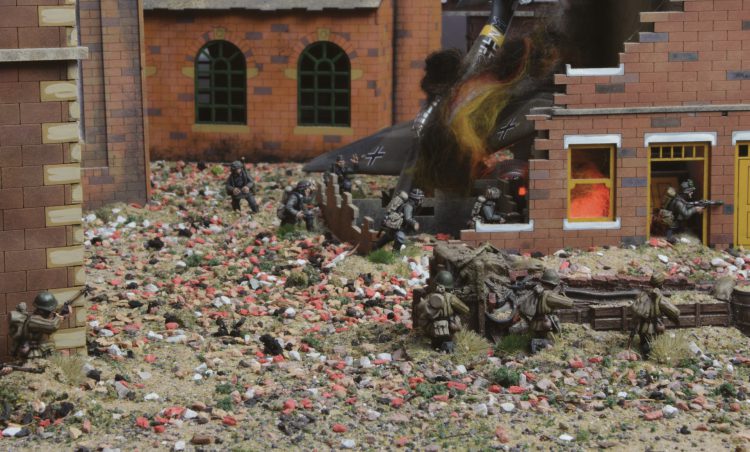
As the German advance into Russia raged on, it reached the city of Stalingrad. The Axis powers attacked the city, and fighting devolved into house-to-house fighting, with both sides pouring reinforcements in. But the Soviets were pushed back further and further, and it seemed like the capture of Stalingrad was inevitable.
In response Soviets launched a daring counterattack against the weaker German flank where their Romanian and Hungarian allies were holding the line. The Soviets punched through the 6th Army lines and reached the city. Hitler ordered the city be defended at all costs, and the Axis dug into the city and refused to give it up. What would follow was vicious close-quarters combat in the streets, air raids on civilian targets and a desperate leap forward in Soviet arms, tactics and military fortitude. It is probably the bloodiest battle in human history, with an estimated 2 million casualties over 5 months, and the defeat of the German forces was an enormous blow to their war effort. Forced to divert troops from the Western Front to tackle the resurgent Soviets, Hitler spread himself thin and opened himself up to attack from the USSR’s allies.
Stalingrad was the site of some of the most intense fighting of the war, pitting small groups of soldiers against each other in dense urban terrain. Weeks would be spent fighting for control of a single street, and the Soviet army was hardened by their experiences into a much more veteran force. If you want to build a lavish urban table, and portray the suspense of urban warfare, there is no better point of the war to do it.
Operation Bagration
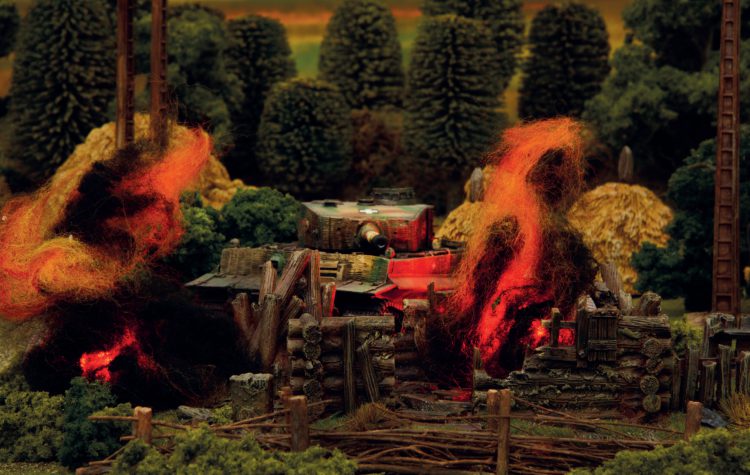
The Soviet counteroffensive was the turning point of the war – it’s hard to overstate the importance of the Eastern Front to the overall path that the conflict took. Bagration is at the heart of this – though not as well known in the West as other offensives, it was the first demonstration of the Soviet doctrines of deep battle and military deception used to full effect. This massive and near-unprecedented level of coordination on a vast scale, coupled with hundreds of confusing feints and distraction attacks, created chaos in the German Army Group Centre. The blows when they finally landed for real were devastating – an almost unimaginable 28 of 34 divisions of were destroyed, and the German line was totally shattered. It was, in truth, the killing blow of the war, the Soviet attack that ended any real hope of Germany’s ambitions. Never before in modern history had an offensive been as effective and total in victory. Though Soviet losses were heavy, the Germans were defeated in detail. All that really remained was the march to Berlin.
Bagration is most interesting on a grand scale – the vast complex web of deception and deep assaults into enemy held territory is what made it a piece of strategic brilliance that is potentially unmatched to the modern day. However, it can be compelling with a smaller scope too – the battles between the Soviets and the Germans featured the most advanced armour of the war, pitting the best Soviet tanks against the new Nazi models, which though unreliable and expensive were actually put in a position to perform as intended. If you want to feature exciting tank battles in your games, Bagration is a good pick.
The Battle of Berlin
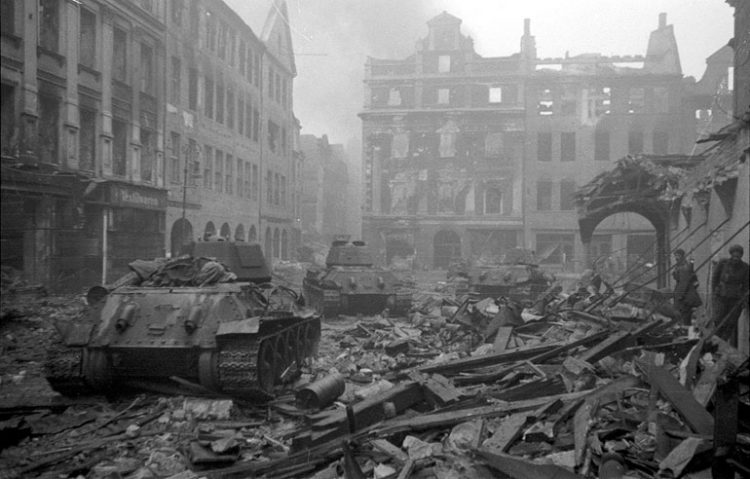
When the British and American troops arrived in Berlin, they found a Soviet flag flying over the Reichstag – the Soviets had taken the city months before. The culmination of the war on the Eastern Front, the Battle of Berlin was a desperate bitter defence of the city by the shattered remnants of the German war machine against Soviet forces at their zenith. The Soviets, led by Marshal Zhukov and Marshal Konev, took the city, fighting through disorganised and poorly equipped groups of Wehrmacht and SS soldiers, as well as citizen militias and the Hitler Youth. The street fighting was the last gasp of the Nazi state, but it was ultimately futile – the battle was lost really before it began. The last desperate act of some units of German soldiers was to fight their way west… so they could surrender to the British and American forces, rather than their most hated foes the Soviets.
The Battle of Berlin is not an easy thing to portray on the tabletop. These battles were desperate, bloody and not tactically or strategically noteworthy. The combatants on the German side were often the old, the very young, or the infirm, pressed into service. If you do want to portray this battle, then we would recommend focusing on the Wermacht and SS forces, as these offered some real resistance in places.
What games should I play?
World War 2 is one of the most gamed eras of history, and as such there are a wealth of games you could choose to play. More than ever we’re having to pick out just a handful that you might want to choose, either those we particularly like or those we think are particularly noteworthy.
Bolt Action
Probably the most popular World War 2 miniatures game on the market, Bolt Action is Warlord’s flagship game and has enormous support from them. Platoon-level, it covers almost every possible aspect of the war (including fictional ones), and the Eastern Front is no different. They publish three key sourcebooks:
- Ostfront: Barbarossa to Berlin which covers the theatre as a whole, but focuses more on the German invasion up to Stalingrad
- Campaign: Stalingrad which dives into the battle of Stalingrad in tremendous detail (we’ll have a review of this book in the next few weeks)
- The Road to Berlin which homes in on the Soviet counteroffensive including Bagration and the Battle of Berlin
They also offer two enormous battle sets that are of particular interest, one for the Battle of Berlin and one for Stalingrad. These enormous boxes include two full forces with supports and terrain for a full table. If you and a friend want to get started on the Eastern Front in a single buy, this is a great way to do it.
You can check out the entire Bolt Action range on Warlord’s website.
Chain of Command
A perennial favourite at Goonhammer Towers, Chain of Command is the platoon-level minis game from Too Fat Lardies. We’ve published a full review of the game before, so we won’t retread that ground, but for the Eastern Front in particular it’s disappointingly thin. There are official lists for the Winter War for Finland and the Soviets, which is nice, but that’s more or less the only offering at the moment.
You can get Chain of Command from the Too Fat Lardies website.
I Ain’t Been Shot Mum
Another TFL offering, this time at company level, IABSM (as it’s usually referred to) is a little less accessible than its smaller sibling, being more in the vein of traditional historicals. That said, it still has actual army balancing mechanics, well-written scenarios, comprehensive army lists, and the core mechanics are, as you might expect by now from TFL, top notch. If you’re looking for company-level play, this is our top recommendation. What it lacks in shine, it makes up for in heart and compelling games.
You can get I Ain’t Been Shot Mum from the Too Fat Lardies website.
Battlegroup
If you fancy another company-level wargame as an alternative, Battlegroup is your best bet. Published by Plastic Soldier Company with the intention you’ll use their miniatures alongside, it’s a solid ruleset if lacking the flair of IABSM. What you will find is comprehensive support for the Eastern Front, with three campaign books dedicated to different parts of the war there: Barbarossa, Spring Awakening (covering the Soviet invasion of Hungary, a rarely covered part of the war which is great to see), and Kursk.
You can get Battlegroup and its supplements from the Plastic Solder Company website.
Flames of War
Some of you may be surprised that we’ve covered two other company-level rulesets before we arrived at Flames of War. Though no longer as popular as it once was, FoW is still probably the second most played World War 2 minis game after Bolt Action… so why is it so far down our list? Short answer is we pretty much universally think it sucks compared to what else is out there. There are lots of problems that would require a lot of space to go into, but in short our strong feeling is that there are better games to play at this scale, and we’d recommend you check them out first. Of course, in the end, it’s often down to what group you have nearby – if what’s available is Flames of War, it won’t be miserable as an experience, but we’d still recommend maybe encouraging the group to give IABSM a whirl with their existing minis once you’ve played a little.
You can get the Flames of War ruleset from the dedicated online store.
What a Tanker!
The fun little brother of Chain of Command, What a Tanker! (the exclamation mark is mandatory) focuses down on small-scale tank battles. It’s fun, easy to pick up and doesn’t worry too much about the details – if you’re looking for a fast beer and pretzels type wargame with some cool tank models, this is probably it. It’s at its best when played in teams, with each player controlling one tank. By best we mean at its absolutely most chaotic and entertaining, which is no bad thing at all.
You can get the What a Tanker! rules from the Too Fat Lardies website.
Five Men at Kursk
If painting up a whole platoon seems too much like hard work, or you really want to breathe life into your individual soldiers, then Five Men at Kursk is a great way to do that. Using the FiveCore system, it’s a fun and exciting game that resolves quickly, and offers options for lots of interesting and varied scenarios. It lets you tinker with each soldier way more than you could in other games, and its small scale means it’s trivially easy to get into – a single sprue of plastic minis and you’re set.
You can grab the ruleset from the Wargame Vault.
Cruel Seas
One of the few well-supported naval games on the market, Warlord’s Cruel Seas is focused on coastal vessels and their conflicts. The choice to forgo the usual large ship battles for smaller clashes pays off in their miniatures range, but the game itself, while fun enough, doesn’t feel like it has a huge amount of depth. It is well supported, easy to get into and has a good Soviet and German selection, so you can definitely represent some of the clashes between those forces as part of the Eastern Front.
You can pick up Cruel Seas from the Warlord Games website.
Blood Red Skies
Warlord’s attempt to dominate World War 2 gaming continues with Blood Red skies, their plane combat game. The system is actually really fun and fast to play, with a surprising amount of tactical depth. There are good ranges for the Soviets and the Germans, which can add some exciting aerial clashes to your battles in the east.
You can grab Blood Red Skies from the Warlord Games website.
What miniatures should I buy?
If there are an overwhelming number of rulesets for the eastern front that pales in comparison to the number of models available. The range isn’t as extensive as for the Western Front, but it’s still enormous, and includes miniatures from almost every scale imaginable.
Warlord Games
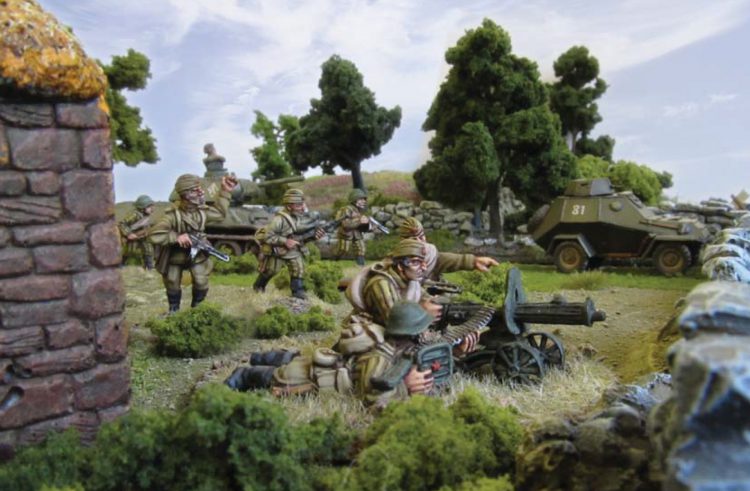
As ever Warlord seems to offer a mind-boggling range of miniatures for the period and theatre, including 28mm infantry (for Bolt Action), 1/200 scale planes (for Blood Red Skies) and 1/300 scale boats (for Cruel Seas). Focusing in on the 28mm scale, you’ll find that they cover the Soviets in pretty comprehensive detail, featuring summer and winter uniforms on infantry, veterans, a great selection of tanks and other vehicles, and many different characters and special characters and support units. It pales in comparison to the Nazi forces however, which are honestly bewildering in variety. Whatever you can think of that you might want for the German forces is available.
The smaller nations are less thoroughly portrayed. The Finns have a decent selection for the Winter War, but it’s all in metal, making it less varied and more expensive. Hungary has a similar treatment, but Romania doesn’t have any infantry on offer at all.
All in all the miniatures are of a high quality, though the kits are very variable. The more recent hard plastic offerings are generally excellent, while the older ones are less friendly to assemble and a little softer on detail. We’ll have a review of the Winter Soviet Infantry in the next few weeks.
You can find the full range of Warlord miniatures on their website.
Battlefront

Battlefront, the makers of Flames of War, have a wide array of 15mm scale miniatures for the Eastern Front. It covers the Soviets in good detail for the mid war (and Stalingrad), and there’s a new late war offering for them that will launch late in 2020. Germany, as seemingly with all other companies, gets a comprehensive range, and you’ll have no trouble finding what you need. Most of what’s on offer is plastic, either hard plastic sprues or the “bendy plastic” that some of the support options are made from (this is less good). The detail is acceptable for 15mm, but not fantastic, and the softer plastic can be frustrating to work with. A few pieces are still metal, and this is honestly better than the soft plastic but still less easy to work with than the hard. Smaller nations again are poorly represented, Hungary and Romania have no infantry on offer at all, which is frustrating, and the Finns have a decent range but all in metal. Where oh where are my hard plastic Finns?
You can find the full range of Battlefront websites on the Flames of War webstore.
Victrix
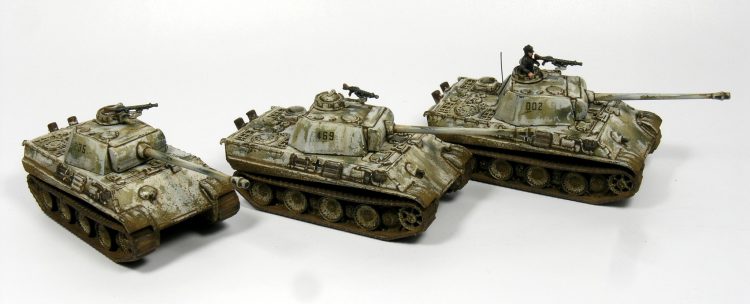
A brand new player on the scene for WW2, Victrix have just started launching their first ranges in the somewhat unusual 12mm scale. This is on the face of it an odd choice, but since it’s a perfect match for both 1/144 model scale and N-gauge trains, it does make some sense – there’s a surprisingly comprehensive range of scale models and scenery to support it already. A fully working trainset incorporated into a gaming table also has some appeal if you’re as nerdy as we are.
The minis themselves bear calling out. They’re all hard plastic and the detail is absolutely breath-taking. They blow Battlefront and Plastic Soldier Company sculpts out of the water, despite being a good bit smaller. It’s almost intimidating at first glance, but the detail is carefully done and deep enough that actually it just enhances the effect of a simply wash more than anything. We’ll have a review of the Panther tank kit in the next few weeks.
You can find all these models on the Victrix website.
Plastic Soldier Company
Plastic Soldier Company are the main competitor to Battlefront, also making 15mm scale miniatures with their key selling point being oh wow these are cheap. They’re definitely not as good a sculpts as the Battlefront offerings, let alone the Victrix, but dear lord do you get a lot for your money. The infantry are much more realistically proportioned than other companies, which is worth watching out for, and they’ll look a little odd together. They have a decently comprehensive range, though the Soviets are a little light compared to the other major nations. They don’t currently offer any of the smaller nations at all.
You can buy their minis from the Plastic Soldier Company website.
Bad Squiddo
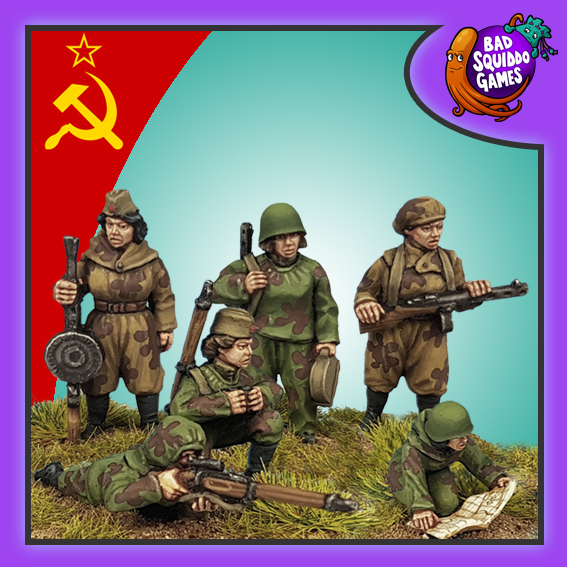
Bad Squiddo’s main focus is realistic female miniatures in 28mm, and so WW2 is a fantastic place for them to focus. There is a wonderful WAF and home front range for the British, but our real focus for this article is on their Soviets. Soviet infantry was notably gender mixed, unusual at the time, and it’s surprisingly hard to find female Soviet soldiers despite their historical authenticity. Bad Squiddo do an excellent range including tank commanders, infantry squads, heavy weapon teams and snipers. They’re all metal, but the sculpts are characterful and reasonably priced as well.
You can grab these minis from the Bad Squiddo website.
GHQ
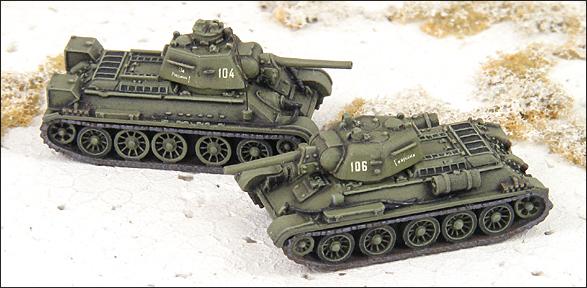
The granddaddy of small scale military models, GHQ has been in business for more than 50 years and still makes the best 6mm WW2 miniatures on the market. Metal, but rich with detail beyond what could possibly be expected at this scale, they’re superb products. They may be a little pricier than other 6mm manufacturers but there is no doubt whatsoever that the quality is worth it. They do a huge range of miniatures for the Eastern Front, including infantry, vehicles and supports.
You can buy direct on the GHQ website.
Black Tree Designs
Much-loved metal miniatures, these 28mm models have a huge amount of character and are of great quality. Their real strength is in presenting some of the more unusual units in the war, including things like Soviet marines. They also do an excellent Partizan range, which is a great addition if you want to portray some of the fighting in the USSR itself.
You can buy their miniatures on the Black Tree Designs website.
Where to start
Unlike for many eras, there are some easy and clear routes into getting started fighting on the Eastern Front. Instead of our usual approach of providing a list of purchases and showing what you can do with them, we’ll just highlight a couple of the great starter boxes available, both for Stalingrad:
- Stalingrad Battle Set – Warlord Games (£200). You’ll need a Bolt Action rulebook to play this, but it’s a great introductory box. It’s a big ticket item, so only best for a big buy in up front, but you get a heck of a lot for your money. You’ll have terrain to fill a small table, and two full forces: German Heer and a Marder III tank destroyer versus Soviet infantry, a T34/76 tank and a sniper team. It’s a solid start for playing any platoon level game, and of course you can use it with skirmish rules like Five Men in Kursk too.
- Stalingrad 2-Player Starter Set – Battlefront (£25). The considerably more budget Stalingrad option, this only gives you a small number of tanks, but it does give you everything you need to get up and running playing Flames of War, and also can be a great box for using the What a Tanker! ruleset.
Wrap up
That’s it for this week. Over the next few weeks we’ll have rules reviews, miniature reviews, hobby spotlights and much more as we explore the Eastern Front in more detail.



You must be logged in to post a comment.